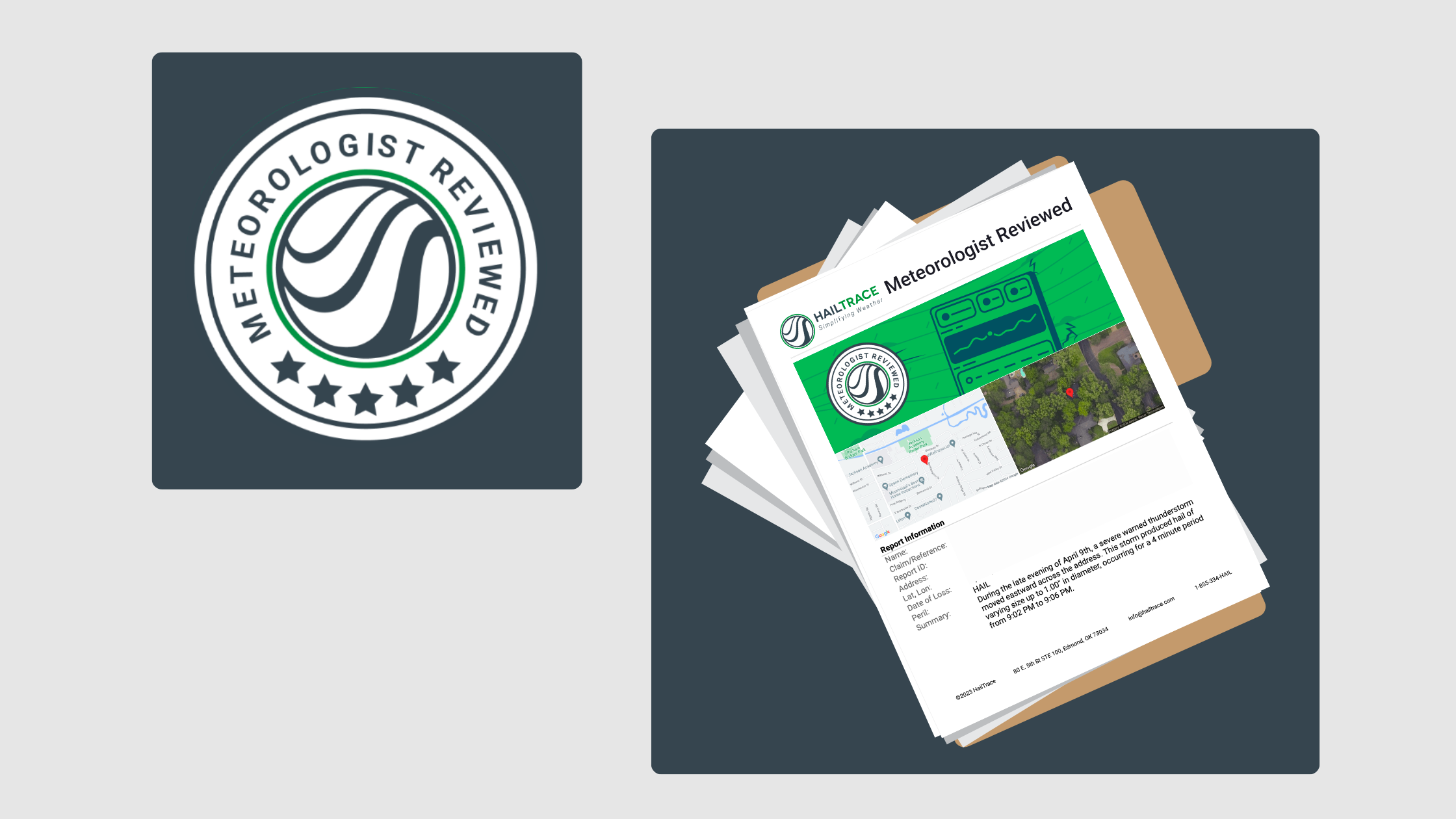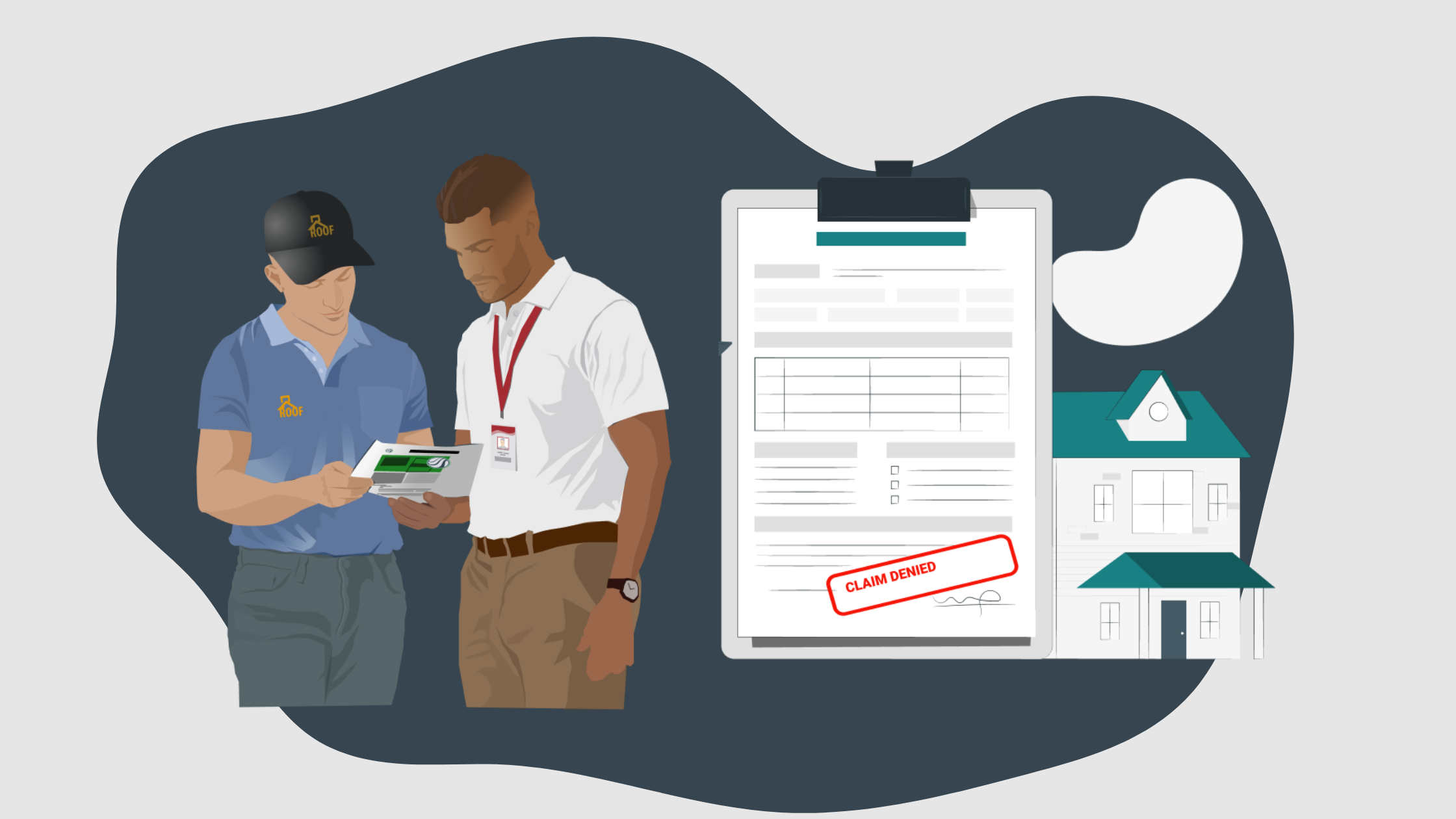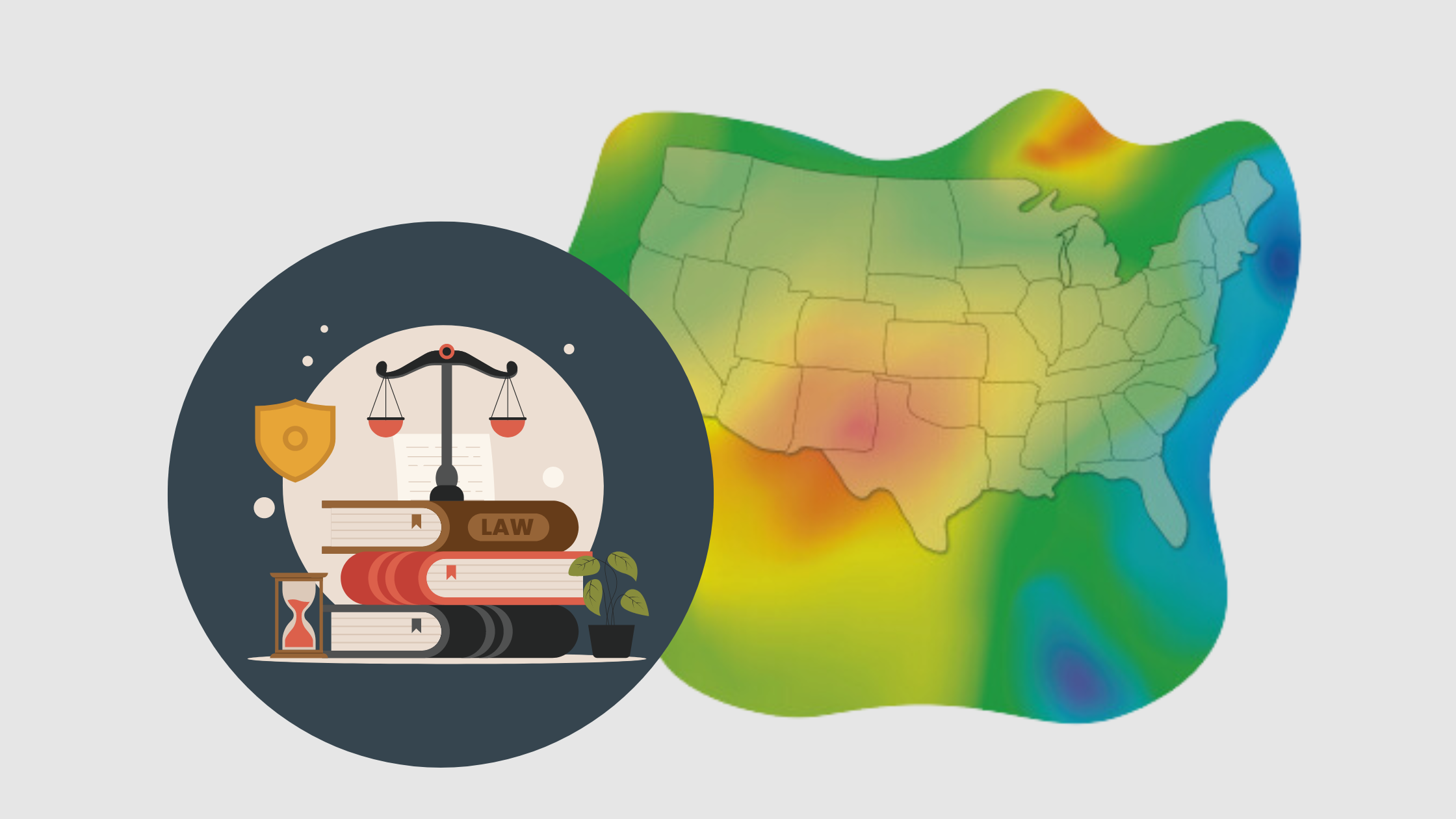4 Reports to Find a Date of Loss and Close a Weather Claim Fast

How many times have you been annoyed because a weather claim dragged on due to disagreement around the date of loss?
Many times, this situation is created because the date of loss is wrong or not backed by any evidence.
It is not enough to document damage on a property. For a proper and quick settlement, a weather claim must have accurate evidence around when and how that damage occurred.
But most people just hope they have the right date of loss and file a claim, repeating the same mistakes and creating the same frustrations.
That is why HailTrace offers weather reports to provide evidence for the date of loss, ensuring that a storm did indeed occur at a property and helping to close a claim quickly.

- Weather History Report: Find a date of loss with a history of hail, wind, and tornado storms that hit a property.
- Meteorologist Reviewed Report: Build credibility with a confirmed date of loss by a meteorologist.
- Certified Report: Detailed analysis of a date of loss to avoid court.
- Expert Report: Expert evidence for a date of loss to win a case.
But what exactly is the difference between our four reports, and how do they fit into the claim process?
This is why I sat down with Stephen Barabas, HailTrace’s Lead Mapping Meteorologist, and John Choquette, HailTrace’s Lead Forensic Meteorologist, to discuss this topic in detail.
Watch the full interview here:
Let's dive in to explore each report and understand how they contribute to resolving weather claims efficiently.
Weather History Report To Find a Date of Loss

In the world of property repair and insurance, having accurate and reliable weather data is crucial to finding a date of loss and closing a claim fast.
The Weather History Report, our most commonly used report, shows every hail, wind, and tornado storm that hit a property and how long the storm lasted.
This data comes from Stephen’s meteorology team and our meteorologist-designed algorithm.
While Stephen’s team does not create these reports directly, their work is essential. They monitor weather 24/7, mapping hail, wind, and tornado events, which feed into every Weather History Report for an address.
Uses of the Weather History Report
Recently, I asked some customers who now make Weather History Reports a part of their process what they used previously to find a date of loss and close a claim.
A common answer was using an inaccurate weather report, a weather app, or a bit of guessing.
Not providing property owners with an accurate date of loss or any evidence around the date of loss repeatedly cost their companies sales or led to denied weather claims.
John Stevens from Faithful Roofing & Restoration explained it this way:
“Before HailTrace, we relied on NOAA data, memory, and other loss reports from claims in the area. Now with the Weather History Report, the process is smoother and more effective in filing an insurance claim, such as for confirming hail dates and determining if filing an insurance claim is worthwhile.”
Here are two ways you can use the Weather History Report to close a sale and streamline the claim process:
Sales Tool
Owners often don’t realize that a storm hit their property. The Weather History Report provides a history of all storm activities that can be shown to property owners.
This not only builds trust but also speeds up the decision-making process, leading to quicker claim closures.
Evidence for the Date of Loss
When processing claims, having a documented history of weather events helps verify the date of loss and ensures that the claim is valid.
For example, contractors can provide evidence to the policyholder around the date of loss. However, getting that date wrong or providing no evidence can result in a prolonged claim or a lost sale.
The evidence from a Weather History Report benefits everyone in the claim process. Insurance adjusters, public adjusters, and engineers all need the same accurate storm history to verify a date of loss and close a claim swiftly.
For example, insurance adjusters need accurate hail history data to assess the date of loss and close a claim.
But when there are questions around the accuracy of a date of loss, there may be a need for a meteorologist to review the storm.
Reviewed Report To Confirm a Date of Loss

Sometimes, there are questions and disputes about the date of loss. In such cases, the Reviewed Report provides an analysis by a meteorologist, ensuring the date of loss data is accurate.
In my interview with Stephen, he shared that his team has produced over 2,000 Reviewed Reports this year alone.
Each report includes an analysis of weather data, such as radar images and storm reports, to ensure the date of loss is accurate.
This allows clients to build credibility with their claims by showing whether a storm in question for the date of loss happened or not.
Additionally, the Reviewed Report provides evidence that hail, wind, or tornado actually hit a property and shows how severe the storm was.
All of this information helps clarify any questions around a date of loss and close a claim.
Why Questions Arise Around the Date of Loss
Disputes about the date of loss can happen for various reasons. Sometimes, a property might have been at the edge of a storm, or different reports might give conflicting information about the severity of the storm.
The Reviewed Report solves these issues by offering a detailed analysis of the weather event from an independent meteorologist.
For example, if a homeowner claims that a storm caused significant damage to their roof on a specific date, but a history report shows only a minor weather event, a Reviewed Report can be requested to look closer at the weather data for that date.
This Reviewed Report can then confirm that a storm did or did not happen at an address, building credibility around the date of loss and closing a claim.
Certified Report To Avoid Court Over a Date of Loss

If a commercial or large residential claim goes into litigation, it can take years to resolve.
Our Meteorologist Certified Report, led by John Choquette’s team, helps close a claim without going to court by providing a more detailed and thorough analysis around the date of loss.
Unlike the Reviewed Report, the Certified Report is dozens of pages long, detailing all available weather data and providing an understandable, detailed explanation of the findings, offering a full view of the date of loss at a property.
Such thorough documentation has been crucial in providing the evidence needed to support or refute claims before they go to litigation.
John mentioned in my interview that engineering firms have seen great success using the Certified Reports.
Engineers often rely on Certified Reports when they need precise and detailed weather data to support their structural assessments.
For example, the weather data conclusions taken from these reports help engineers determine how much damage was caused by a storm on the date of loss, which is crucial for accurate repairs and cost estimation.
Thus, this report helps close a claim quickly, saving significant time and resources for everyone involved in the claim process.
But what happens if, after using the detailed Certified Report for the date of loss, a claim still ends up going to court?
That’s where the Certified Report can be upgraded to a Meteorologist Expert Report to win an argument in court.
Expert Report To Win an Argument Over a Date of Loss

When a claim still goes to court after using a Certified Report, the Expert Report comes into play to win an argument around the date of loss.
This report follows the Daubert rule and provides the most in-depth analysis we offer for one or more storms at an address, conducted by an independent forensic meteorologist.
When a claim reaches the ligation stage, having a well-documented and expertly analyzed report is crucial. This report not only includes detailed weather data but also expert interpretations and explanations, making it easy for everyone to understand.
This is especially important in court, where the ability to explain complex weather details in simple terms can make or break a case.
Process of an Expert Report
The process of using HailTrace’s Expert Report involves several steps:
- Being Retained: John Choquette is hired as an expert witness.
- Creating the Report: A detailed report is made, often including historical weather data and thorough analysis.
- Deposition: Our Expert Meteorologist may be questioned and called to testify in court.
When John is retained as an expert witness, he starts by thoroughly reviewing all relevant data related to the weather event in question. This includes historical weather records, radar data, eyewitness accounts, and any other important information.
Once he has gathered all the necessary data, he creates a detailed Expert Report that outlines his findings and provides a clear explanation of the weather events and the date of loss.
From there, he may be called as an Expert Witness in a deposition or in a courtroom.
The Role of Expert Witnesses
As our Lead Forensic Meteorologist, John Choquette’s role goes beyond creating reports. He provides critical testimony that can influence the outcome of a case as an Expert Witness.
His expertise in meteorology and experience in court cases give him the knowledge to present convincing evidence in depositions and trials.
This testimony can be key in proving or disproving claims related to weather events and the date of loss.
John shared in my interview that while being questioned can be nerve-wracking, it is an important part of the legal process. His ability to present detailed and accurate weather data in a clear and simple way helps build a strong case and win an argument.
In all the cases where John has been an Expert Witness, only one has gone to trial, requiring him to take the stand.
His testimony in that case helped explain the technical aspects of the date of loss and gave the court a clear understanding of what weather conditions were present at the property in question.
John’s role as an Expert Witness is crucial in helping judges and juries make informed decisions.
Find a Date of Loss & Close a Claim Today!
When you're handling a weather claim, you must provide clear evidence for the date of loss and verify that a storm impacted a property to close a claim swiftly.
That's why HailTrace offers four distinct weather reports.
From the comprehensive Weather History Report to the verified Meteorologist Reviewed Report, and from the in-depth Certified Report to the court-ready Expert Report, each report plays a vital role in the claims process.
These tools ensure that every claim is backed by accurate, reliable data, helping you close weather claims quickly and efficiently.
Understanding the differences between these reports and how they fit into the claim process is key to resolving weather claims smoothly.
With HailTrace, you're equipped with the precise information you need to navigate the complexities of weather claims and achieve the best possible outcomes.

